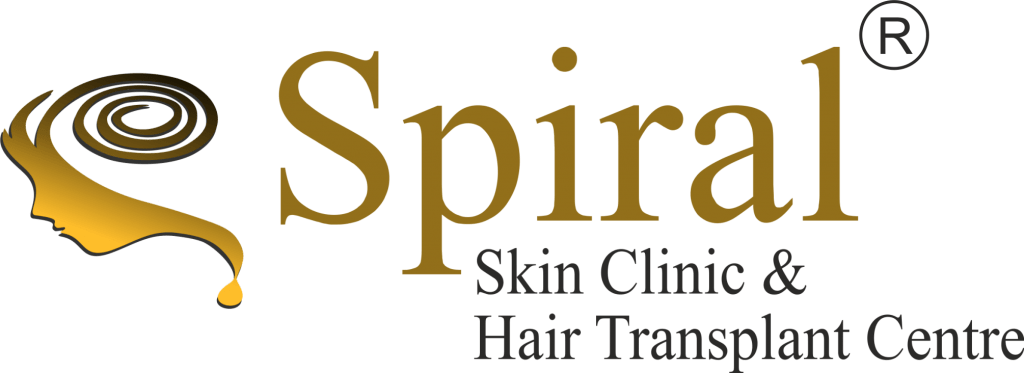
HAIRLOSS TREATMENTS
Hairloss can be managed by PRP therapy, mesotherpy and medications.
Medication Therapy
Early stages of hair loss can be slowed or reversed with medication. FDA-approved drugs include minoxidil and finasteride. Finasteride is an oral medication taken for hair loss, and it works by reducing the level of DHT produced by the 5-alpha reductase type 2 enzyme by 85-90%, thereby reducing total serum DHT by 65-70% and protecting the hair follicles from further DHT damage. Dutasteride, a similar drug, is used off-label as a hair loss treatment. Dutasteride lowers DHT levels more potently than finasteride by inhibiting the production of DHT by the 5-alpha reductase type 1 in addition to type 2 enzyme, and is, therefore, in theory, more effective. However, it is not FDA-approved as a hair loss treatment, and its long-term side effects (including possible neurological damage) are unknown. Minoxidil is a growth stimulant that stimulates already-damaged hair follicles to artificially produce normal hair. Minoxidil does not, however, provide any protection to the follicles from further DHT damage, and when a follicle eventually becomes completely destroyed by DHT, minoxidil will no longer be able to have any more regrowth effects on that follicle. Topical formulations of finasteride have been argued to be of similar efficacy to systemic, though prostate weight and serum PSA levels were not measured to exclude systemic absorption of topical application as the cause of hair growth.Other treatment options not already mentioned include tretinoin combined with minoxidil, ketoconazole shampoo, and spironolactone.
More advanced cases may be resistant or unresponsive to medical therapy, and require hair transplantation. Naturally occurring units of one to four hairs, called follicular units, are excised and moved to areas of hair restoration. These follicular units are surgically implanted in the scalp in close proximity and in large numbers. The grafts are obtained from either follicular unit transplantation (FUT) or follicular unit extraction (FUE). In the former, a strip of skin with follicular units is extracted and dissected into individual follicular unit grafts. The surgeon then implants the grafts into small incisions, called recipient sites. Specialized scalp tattoos can also mimic the appearance of a short, buzzed haircut.
Platelet Rich Plasma - PRP
Platelet Rich Plasma is a process where a patient’s blood is drawn, separated and concentrated through a process called centrifugation, and re-injected into desired areas of the body. The PRP process concentrates useful cellular components of the blood and injects them into areas where the body can utilize the additional resources.
PRP (PRP) therapy is an exciting new non-surgical therapeutic option for natural hair growth and stimulation. We offer PRP therapy as an innovative scientifically based natural non-surgical hair restoration therapy.
What Are Platelets ?
Platelets are biological constituents of blood, along with red and white blood cells. Unlike red and white blood cells, platelets do not have a nucleus and therefore do not qualify to be called “cells”. They are somewhat smaller than red and white blood cells.
Platelets are probably best known as components of the blood clotting system. When injury disrupts a blood vessel and causes bleeding, platelets are quickly activated and contribute to formation of a clot that stems the flow of blood. But platelets are more than just first-line responders to bleeding injury. Every platelet is also a biochemical storehouse of regulatory, signaling and growth-factor molecules that participate in recovery and healing of tissue as well as emergency response to injury. Growth-factor molecules associated with platelets include:
- Platelet-derived growth factor (PDGF)—promotes blood vessel growth, cell replication, skin formation
- Transforming growth-factor-beta (TGF-b)—promotes growth of matrix between cells, bone metabolism
- Vascular endothelial growth factor (VEGF)—promotes blood vessel formation
- Epidermal growth factor (EGF)—promotes cell growth and differentiation , blood vessel formation, collagen formation
- Fibroblast growth factor-2 (FGF-2)—promotes growth of specialized cells and blood vessel formation
- Insulin-like growth factor (IGF)—a regulator of normal physiology in nearly every type of cell in the body
All of these growth factors initiate and enhance physiologic processes that contribute to tissue recovery and health after injury. The growth factors are also involved in normal physiologic processes such as blood vessel formation.
What Is PRP?
PRP is blood plasma containing a concentration of platelets many times greater than occurs normally in blood. PRP is “autologous”, meaning that it comes from the patient’s own body. This is similar to the practice of having a patient donate his/her own blood before a surgical procedure, to be used in preference to blood from the hospital blood bank should a transfusion be needed. Another example is the removal and transplantation of a patient’s own skin for a plastic surgery procedure. Because PRP is autologous, it has no potential for causing a foreign-body immunologic reaction. PRP is immunologically neutral.
How PRP Is Made?
Platelets for PRP are derived from a patient’s own blood:
- Blood is withdrawn from a patient’s arm by syringe, as it would be for any laboratory procedure.
- The tubes containing withdrawn blood are placed in a centrifuge and spun for a period of time.
The centrifuging “spins down” the red and white blood cells and platelets and concentrates them at various levels in the tubes. Blood plasma that is rich in platelets is drawn off from the appropriate level. Plasma defined as platelet-rich plasma contains 4 to 8 times the number of platelets per cubic centimeter found in normal plasma. With a little additional preparation the PRP is ready for application.
PRP promotes hair growth from follicles by the action of platelet growth factors on hair follicle stem cells. The platelet growth factors induce follicle stem cells to shift from a dormant state to an active state that starts the process of hair production.
To Reinvigorate Dormant Hair Follicles The platelet growth factors can “wake up” dormant hair follicles and begin the production of new hair. PRP was applied after scalp skin was slightly injured to induce platelets to release growth factors at the injury site. Enhanced hair growth and hair diameter was noted over the next few months
Safety,Complications, Contraindications To Use Of PRP
The PRP/Stem cell treatment is completed in 1 hr, after that you can resume the normal activities. It is completely safe, painless and does not have any side effects. After the treatment no special precaution is needed.
Procedure
-
Step 1: Withdrawal of blood
A small amount of blood is drawn from an accessible vein in your hand after following sterile blood draw precautions.
-
Step 2: Preparation of Platelet Rich Plasma
At Advanced Hair Transplant Centre we make use of the Harvest SmartPReP2 Technology (Harvest Technologies GmbH, Munich, Germany). SmartPReP is the first system designed for rapid, point-of-care preparation of Platelet Rich Plasma (PRP). The SmartPReP produces a predictable Autologous Platelet Concentrate (APC+™) enriched with multiple Growth Factors. SmartPReP produces viable platelets increased 4X or greater above baseline levels; the clinical requirement needed to accelerate healing. SmartPReP provides the necessary concentrations of platelets, growth factors, and white blood cells vital for initiating and accelerating tissue repair and regeneration. The device is US FDA, CE and DCGI approved. From the time of blood draw, it takes just 15 minutes to obtain the final Platelet Rich Plasma.
-
Step 3: Local anesthesia
You will be lying comfortably on an operative table and the area is prepared for the procedure. The local anesthesia is injected with very fine size needle carefully and ice packs are used to make the area numb so no pain is felt during the injection. With just one small prick the whole area is made numb so no pain is felt during the procedure The Platelet Rich Plasma containing the reparative components is injected into the area of the scalp that is devoid of natural hair growth. This can be done essentially as an outpatient procedure. Scalp roller with 1mm fine needles is subsequently used over the treated area to stimulate the stem cells as well as to increase the blood supply leading to better hair growth.
-
Step4: Post procedural care
The hair is left unwashed post procedure at least for the next 24 hours with a head gear on. No bandages / dressing is required at the site if Platelet Rich Plasma is the sole protocol used

